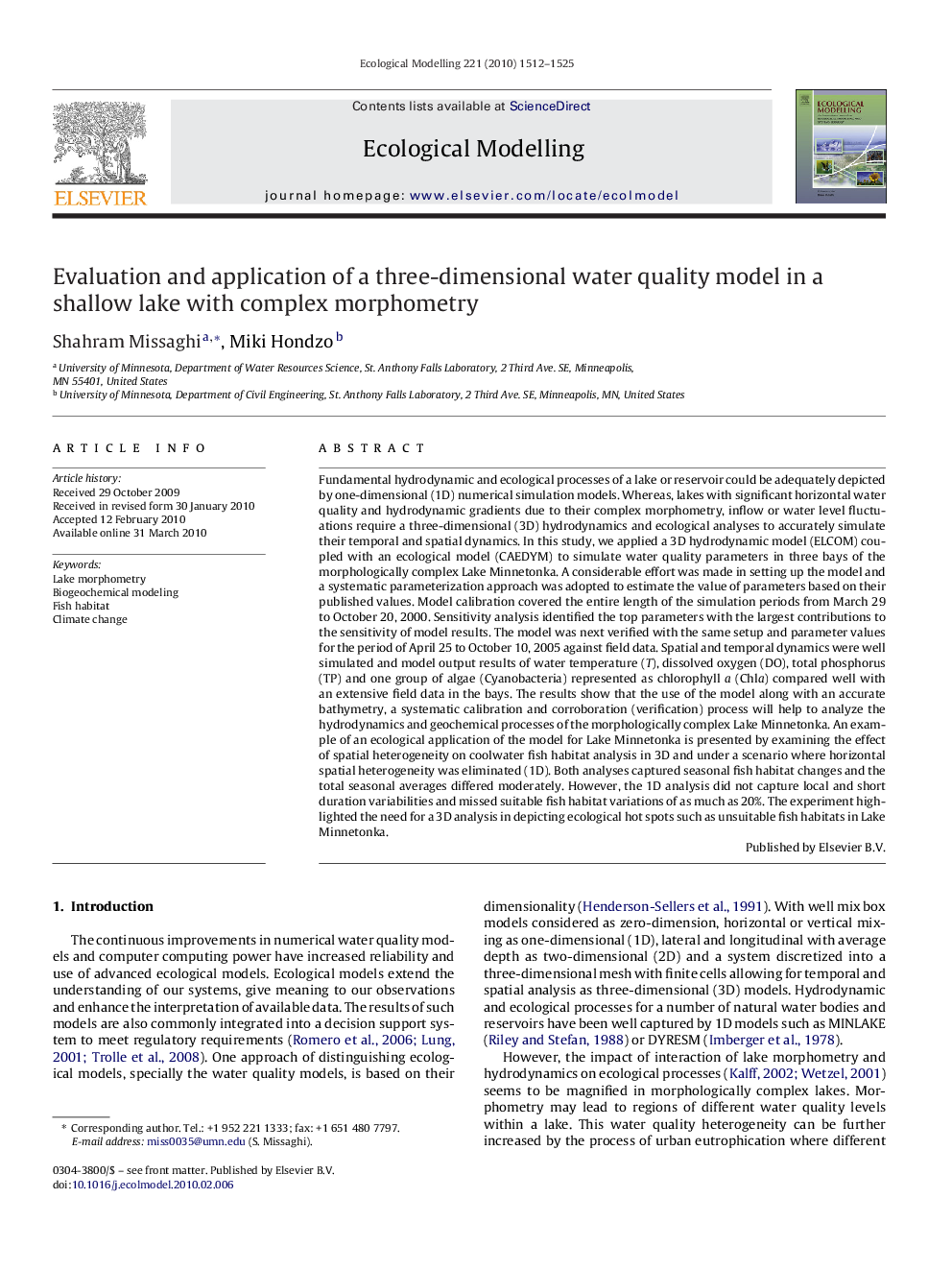| Article ID | Journal | Published Year | Pages | File Type |
|---|---|---|---|---|
| 4377418 | Ecological Modelling | 2010 | 14 Pages |
Fundamental hydrodynamic and ecological processes of a lake or reservoir could be adequately depicted by one-dimensional (1D) numerical simulation models. Whereas, lakes with significant horizontal water quality and hydrodynamic gradients due to their complex morphometry, inflow or water level fluctuations require a three-dimensional (3D) hydrodynamics and ecological analyses to accurately simulate their temporal and spatial dynamics. In this study, we applied a 3D hydrodynamic model (ELCOM) coupled with an ecological model (CAEDYM) to simulate water quality parameters in three bays of the morphologically complex Lake Minnetonka. A considerable effort was made in setting up the model and a systematic parameterization approach was adopted to estimate the value of parameters based on their published values. Model calibration covered the entire length of the simulation periods from March 29 to October 20, 2000. Sensitivity analysis identified the top parameters with the largest contributions to the sensitivity of model results. The model was next verified with the same setup and parameter values for the period of April 25 to October 10, 2005 against field data. Spatial and temporal dynamics were well simulated and model output results of water temperature (T), dissolved oxygen (DO), total phosphorus (TP) and one group of algae (Cyanobacteria) represented as chlorophyll a (Chla) compared well with an extensive field data in the bays. The results show that the use of the model along with an accurate bathymetry, a systematic calibration and corroboration (verification) process will help to analyze the hydrodynamics and geochemical processes of the morphologically complex Lake Minnetonka. An example of an ecological application of the model for Lake Minnetonka is presented by examining the effect of spatial heterogeneity on coolwater fish habitat analysis in 3D and under a scenario where horizontal spatial heterogeneity was eliminated (1D). Both analyses captured seasonal fish habitat changes and the total seasonal averages differed moderately. However, the 1D analysis did not capture local and short duration variabilities and missed suitable fish habitat variations of as much as 20%. The experiment highlighted the need for a 3D analysis in depicting ecological hot spots such as unsuitable fish habitats in Lake Minnetonka.
